Red Hook’s Visitation Church -- 165 Years of Neighborhood Service
The Visitation Church on Richards Street is a testament to the hard work and courage of those who came to a new land, their descendants, and all those who have followed them since.

Photo by Susan De Vries
By Suzanne Spellen (aka Montrose Morris)
Red Hook was a successful harbor town from its beginnings. By the 1850s, it had expanded greatly due to its proximity to Manhattan’s own shipping center as well as being the natural end of the Erie Canal. Boats and barges bringing goods and raw materials began docking in Red Hook as early as the 1830s. The creation of the Atlantic Docks and, later, the Erie Basin by the end of the 1850s cemented Red Hook’s importance as one of the great ports of America.
With the growth of the docks and the opportunities of the sea came industries that thrived on easy delivery and shipping of raw and often heavy materials. A growing factory district joined the warehouses and shipping facilities. As Red Hook grew, factories making everything from natural resins to foundry goods as well as coal and lumberyards were grouped together with rows of houses and blocks of warehouses.
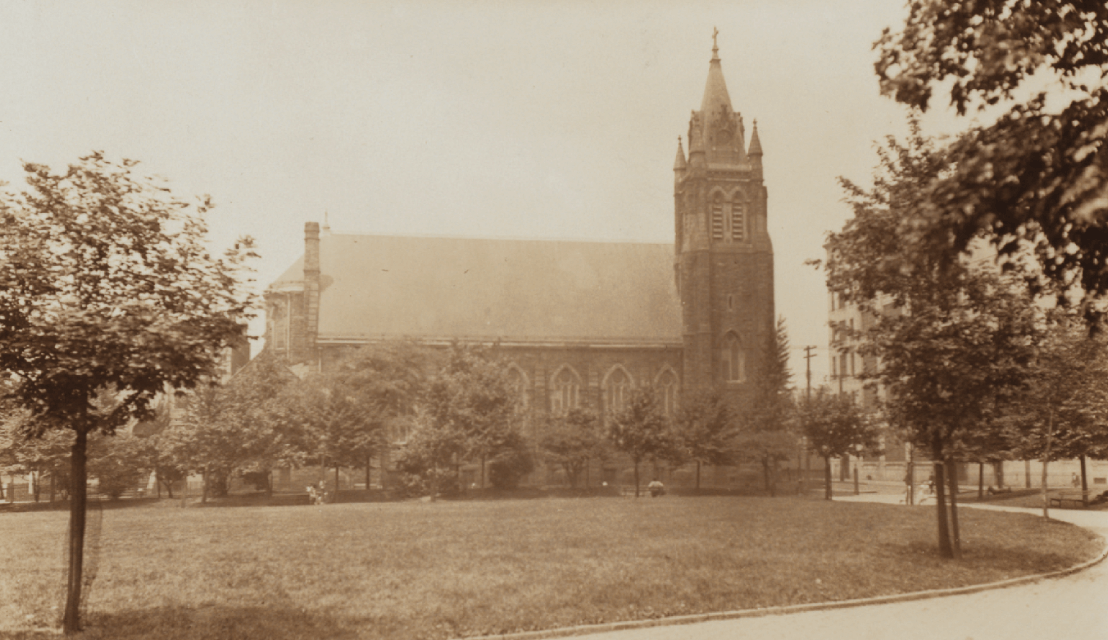
It was truly an organic growth, one that would never be allowed today, in light of modern safety and zoning regulations. If one looks at 19th century maps, it really is a wonder the entire neighborhood didn’t explode in apocalyptic fire more often than it did, with toxic chemical manufacturers next door to paper factories, next to a row of homes.
A rapidly growing Red Hook meant jobs. Workers needed places to live, so housing went up throughout the neighborhood as rapidly as industry. And even the most overworked dockworkers and factory hands had needs beyond work, food and shelter.
In the decade before the Civil War, New York City and Brooklyn saw great population growth because of immigration. Half the population was foreign born. During the 1840s, the greatest number of immigrants were Irish and German. Ireland’s Potato Famine brought desperate families here by the thousands, as did civil war in the German states. They joined European immigrants from the Scandinavian countries, England, Spain and Poland, among others.
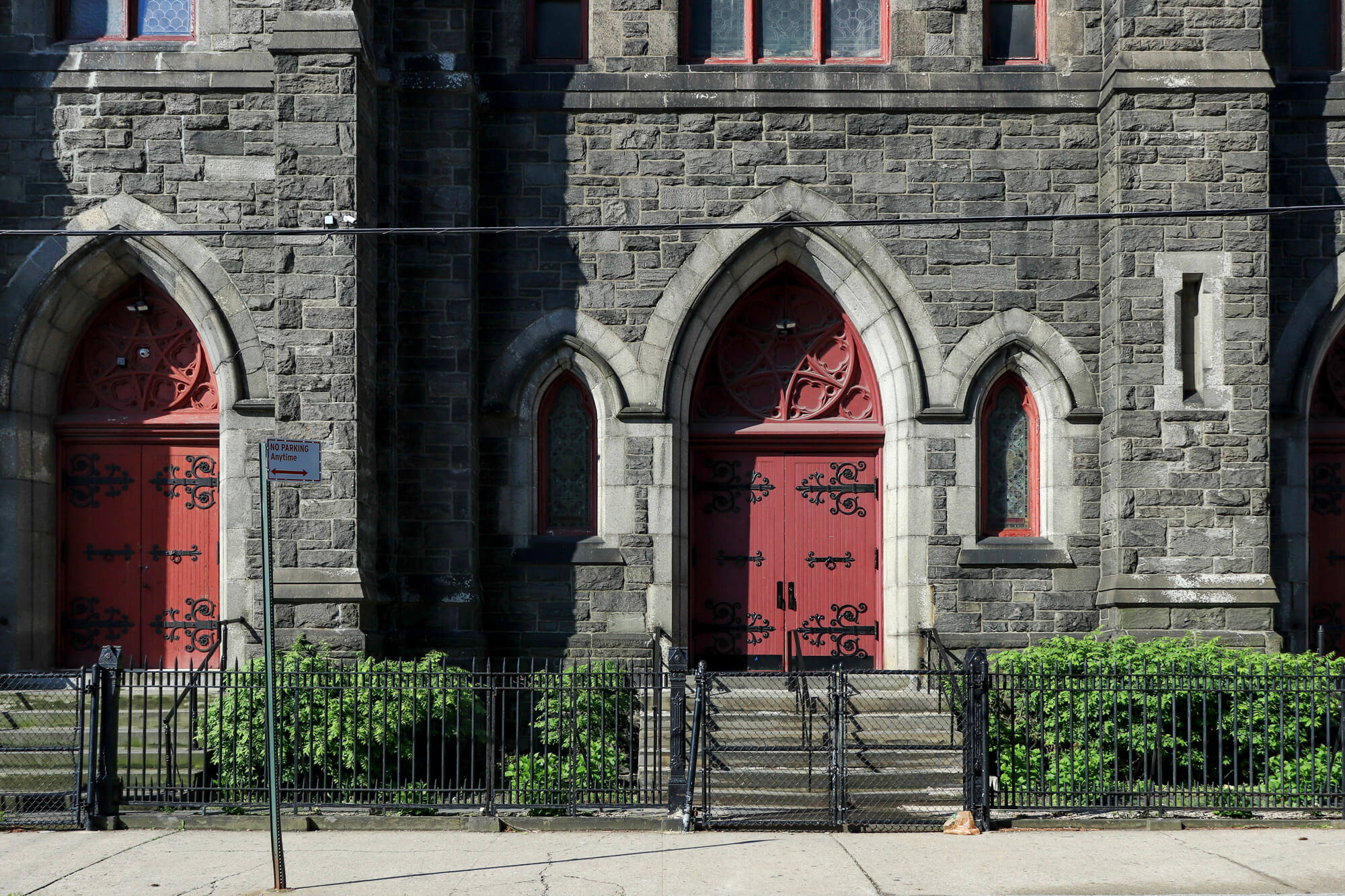
A successful 19th century community was a place that offered a safe home, small businesses that brought in food and other necessities, schools for the children and places of spiritual guidance to feed the soul. Two million Irish arrived here, along with a million Germans. Almost all of the Irish and more than a third of the Germans were Catholic.
The Growth of Brooklyn’s Catholics and Visitation’s Origins
Many of Brooklyn’s Christian congregations saw Red Hook as a place needing missionary help. As the population grew, and because many of the new immigrants were desperately poor, established and wealthy churches in the Heights and Cobble Hill established mission churches throughout Red Hook. Many of those mission churches grew and became independent congregations. Some, like Brooklyn Heights’ Swedish churches, made a large Scandinavian sailor population their mission. The Baptists, Congregationalists and other denominations founded mission churches as well.
Brooklyn’s Catholics were overwhelmed. They were a part of the Diocese of New York, until they realized New York couldn’t handle over 2 million Catholics. In 1852, under the papal direction, the Diocese of Brooklyn was created. Several months later, in 1853, John Laughlin was appointed the first Bishop of Brooklyn.
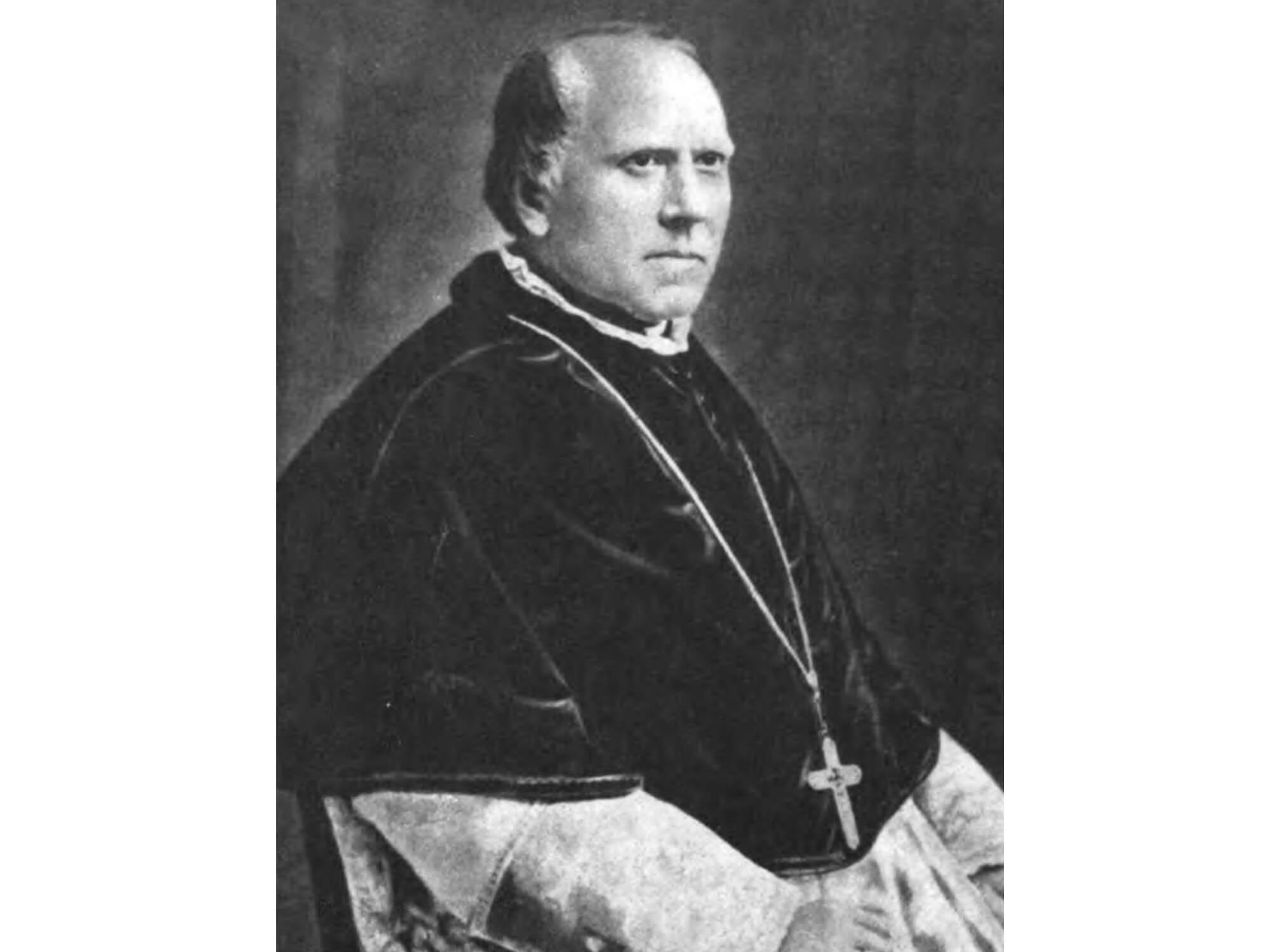
Laughlin, like many of Brooklyn’s Catholics, was himself an Irish immigrant. He came to the U.S. as a child with his parents and grew up in Albany. He was ordained a priest in 1840. By the end of his 38-year tenure as Bishop of Brooklyn, he had overseen the building of 125 churches and chapels, 93 parochial schools, two colleges, 10 orphanages, two homes for the aged, a home for destitute boys and a seminary — an impressive legacy.
At the time of Bishop Laughlin’s elevation, Red Hook’s growing Catholic population was being served by Catholic parishes in today’s Carroll Gardens and Cobble Hill, but they needed their own nearby parish. Red Hook’s Irish and German dockworkers and factory workers petitioned for their own church. Permission was granted, one of Bishop Laughlin’s earliest acts.
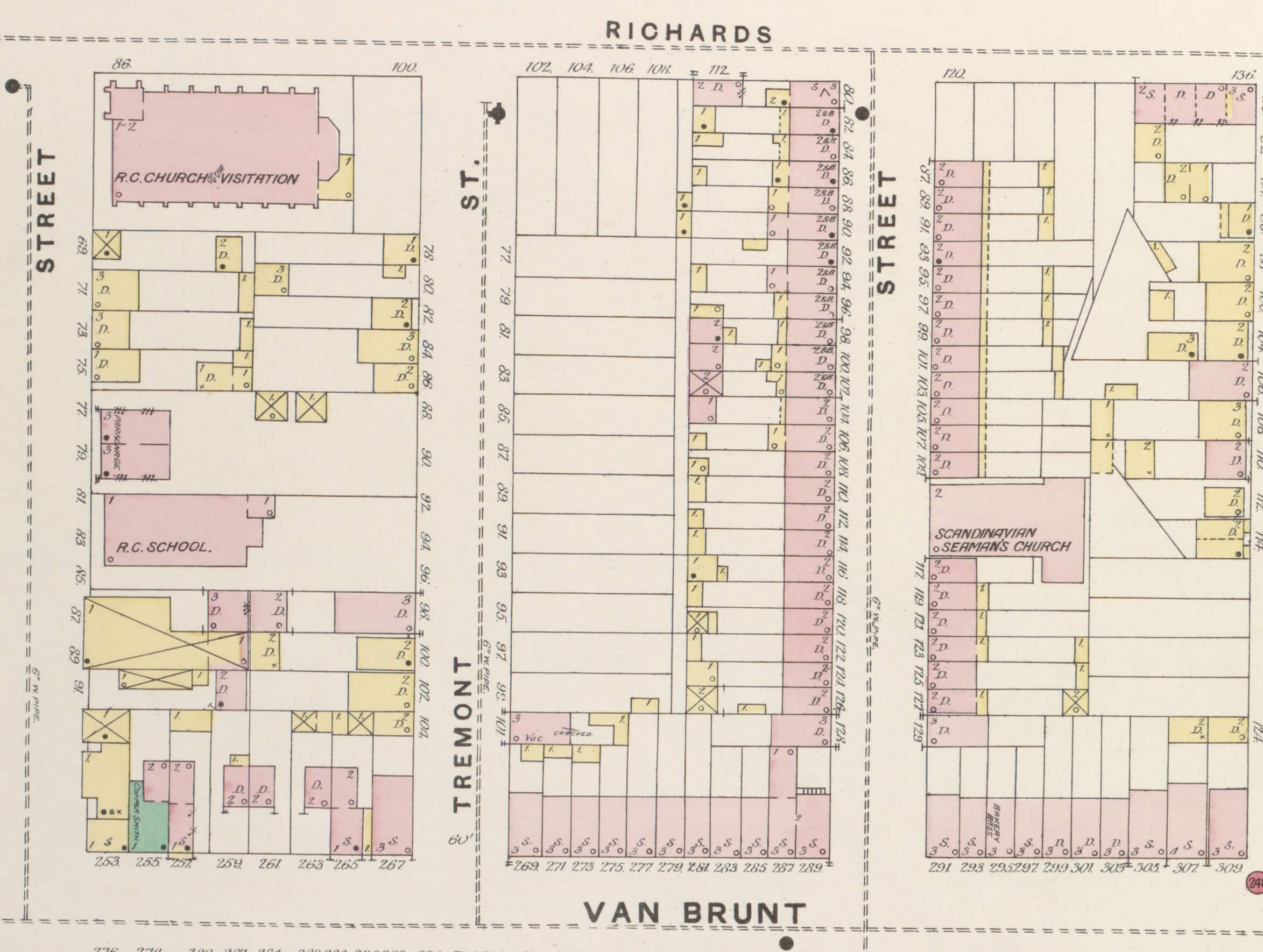
The new parish was named Visitation of the Blessed Virgin Mary. The name refers to the visit of a pregnant Mary with her also-pregnant cousin Elizabeth, as chronicled in the Gospel of Luke. Elizabeth was carrying John the Baptist, and the Bible reports that the unborn child leaped within her, recognizing the presence of Jesus within Mary. Both women rejoiced in the mystery of the workings of God within their lives, and this event is an important celebration of the church.
Mary has always been an important figure in the Irish Catholic tradition, so naming this parish in her honor continued that tradition, joining such local parishes as Mary Star of the Sea, which was established in Carroll Gardens about the same time.
The first Visitation church was a wooden church built on the corner of Verona Street, then called Ewen Street, and Van Brunt. Bishop Laughlin was on hand to dedicate it on October 29, 1855. A few years afterward, it was already too small.
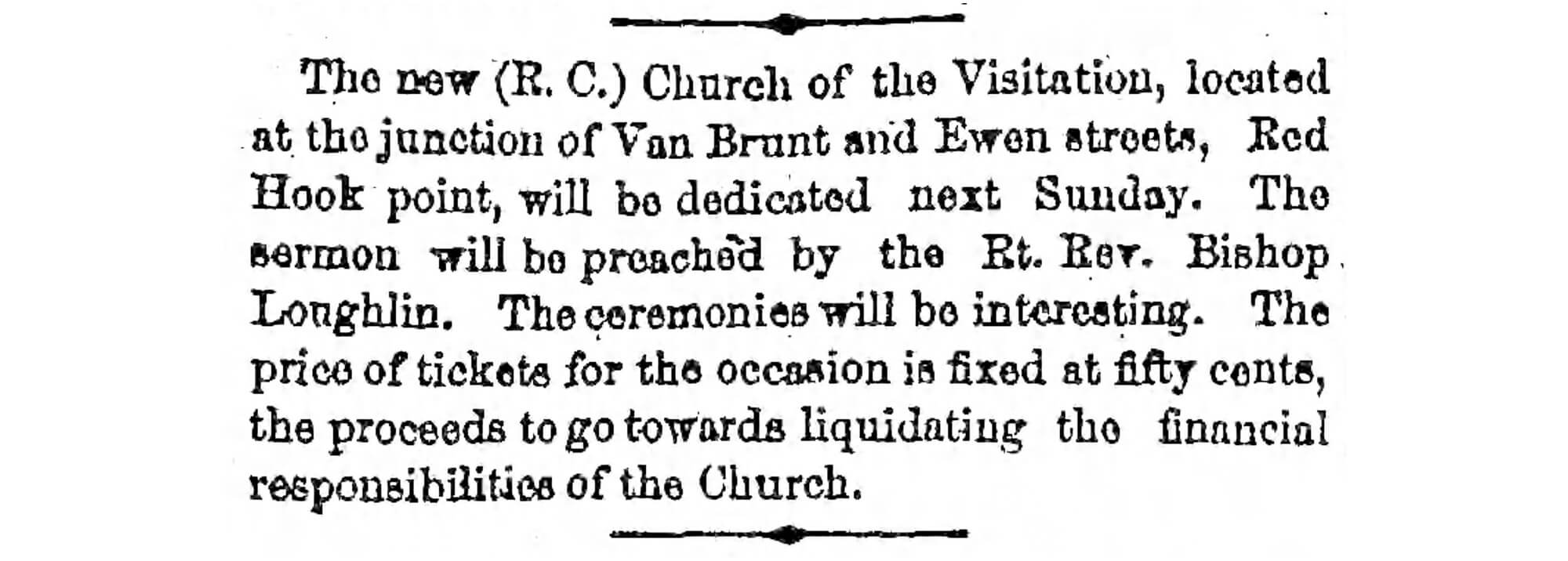
The second church was constructed in 1876. This one was built with sturdy granite and wood and sat 1,500 people. It dominated the corner at 175 by 60 feet and cost the parish $180,000 to build. It was a fine building in the Gothic style. By the end of the century, the church had grown to a complex that included a nearby school, a rectory, convent and parish hall.
In the middle of July, in 1896, a passerby at midnight noticed that the church seemed to be on fire. He alerted the priests, the neighborhood and the fire services, but the fire spread rapidly to engulf the entire building. Because of a lack of funds, parts of the church had never been finished. The church’s ceiling was in the process of being painted and frescoed in a decorative fashion when the fire started.
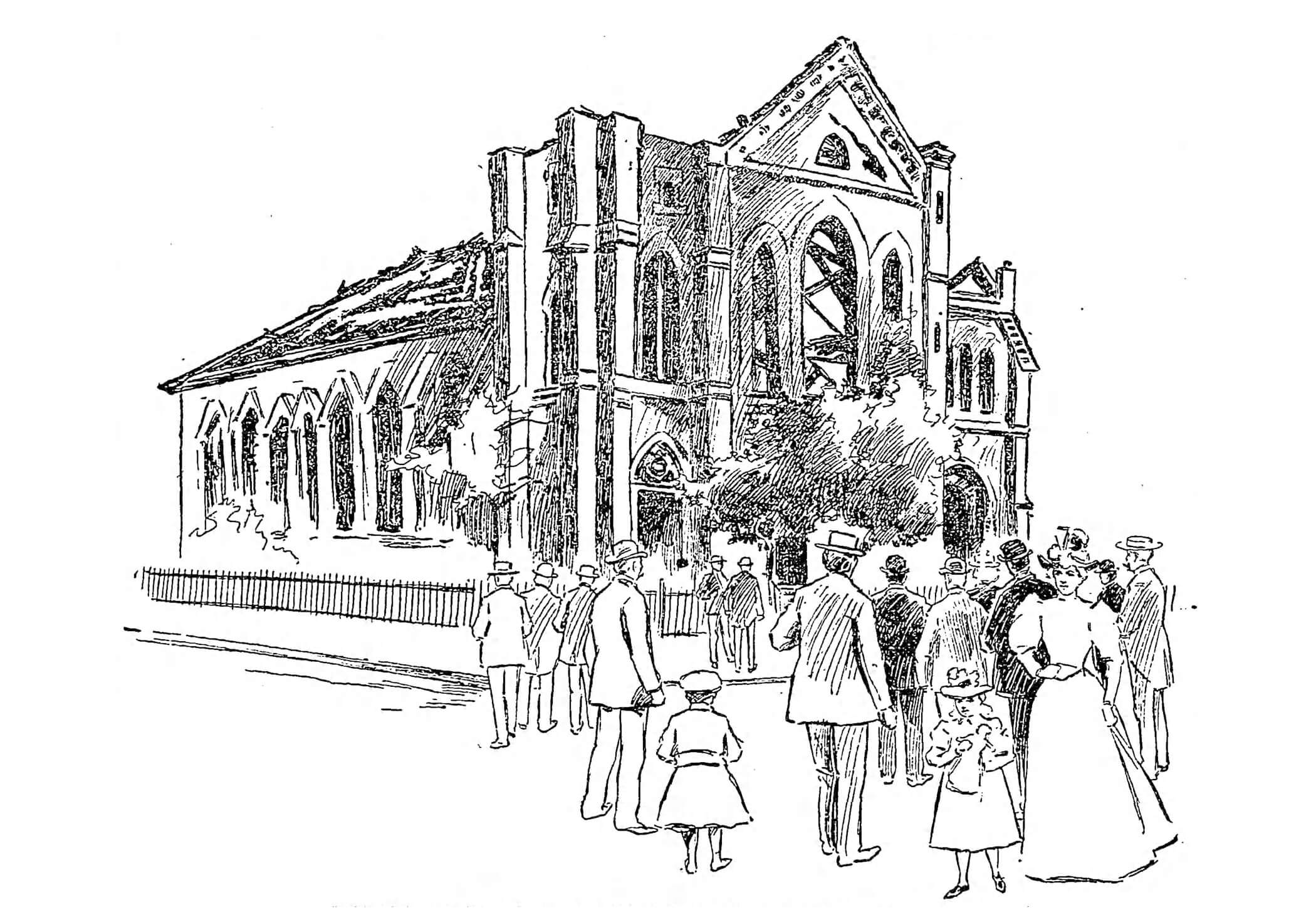
The fire, fueled by the wooden interior, was so fast moving and burned so hot that the priests were unable to enter to save the chalice or any of the other altar treasures. Hundreds of people came out to watch as the stained glass windows melted and fell away into the interior, and as the slate roofing tiles exploded into shards, shooting out into the street. Although the fire department tried its best, the roof collapsed, and the building was totally destroyed except for the exterior stone walls.
The parish took the disaster in stride, grateful that no one was hurt or killed, and immediately began rebuilding. The new church rose on the corner of Richards and Verona streets. Although the efforts to rebuild were mighty, this was not a wealthy parish. According to the Brooklyn Eagle, the parish had never been prosperous, as its parishioners were the hardworking poor, many only just making ends meet themselves.
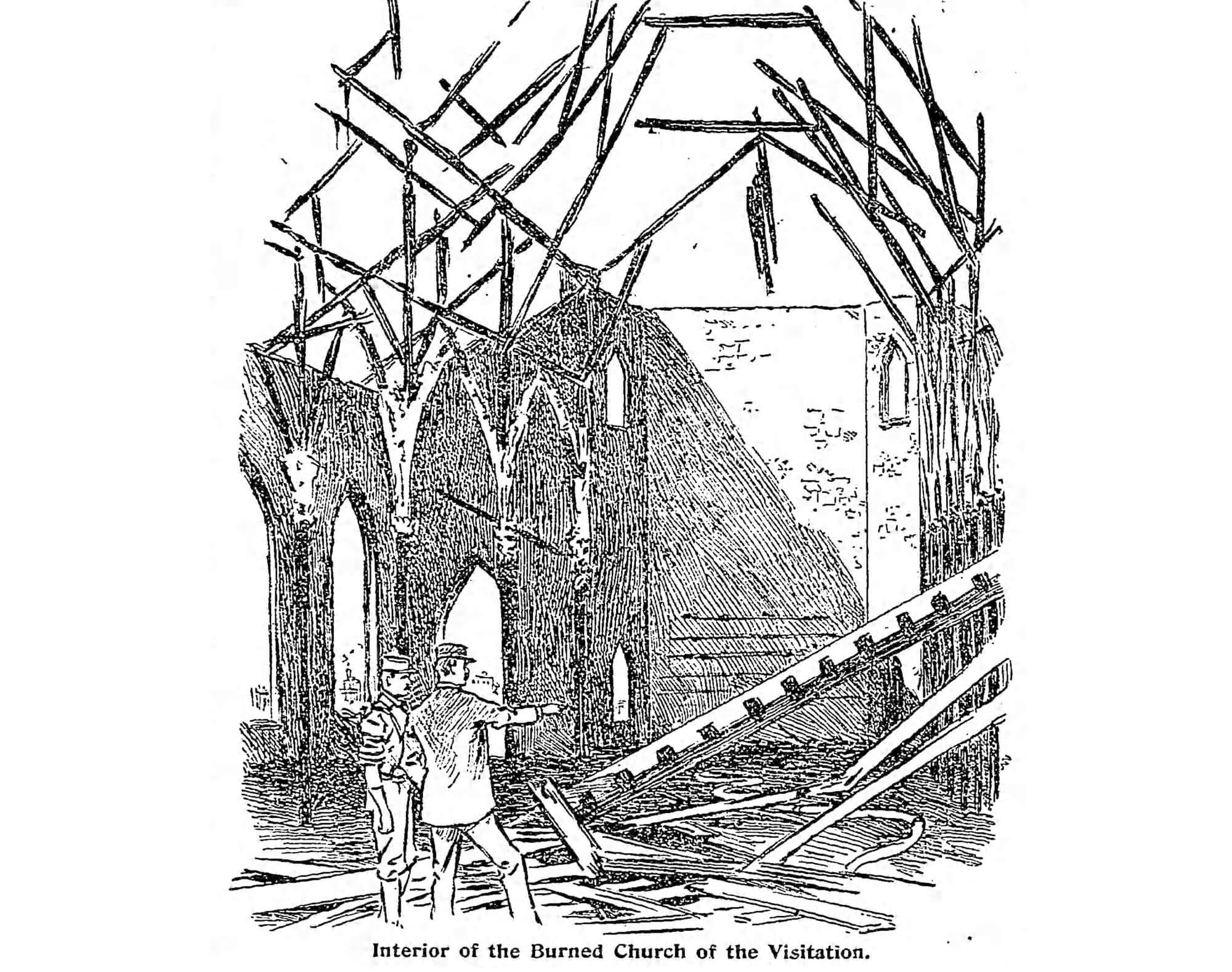
A massive fundraising campaign commenced, and the new church was built. The architect is not mentioned in any of the church histories or news reports. But the church is reminiscent of the work of Thomas Houghton, one of Catholic Brooklyn’s greatest architects, the son-in-law and partner of the great Patrick Keely.
Keely designed nearby Mary Star of the Sea, and Houghton was responsible for the design of Carroll Garden’s St. Agnes Church. Visitation is made of Manhattan schist, the bedrock stone of New York. This same material was used in Thomas Houghton’s design for Our Lady of Victory Catholic Church in Stuyvesant Heights. The design of the building is also similar, perhaps giving a clue to its architect.
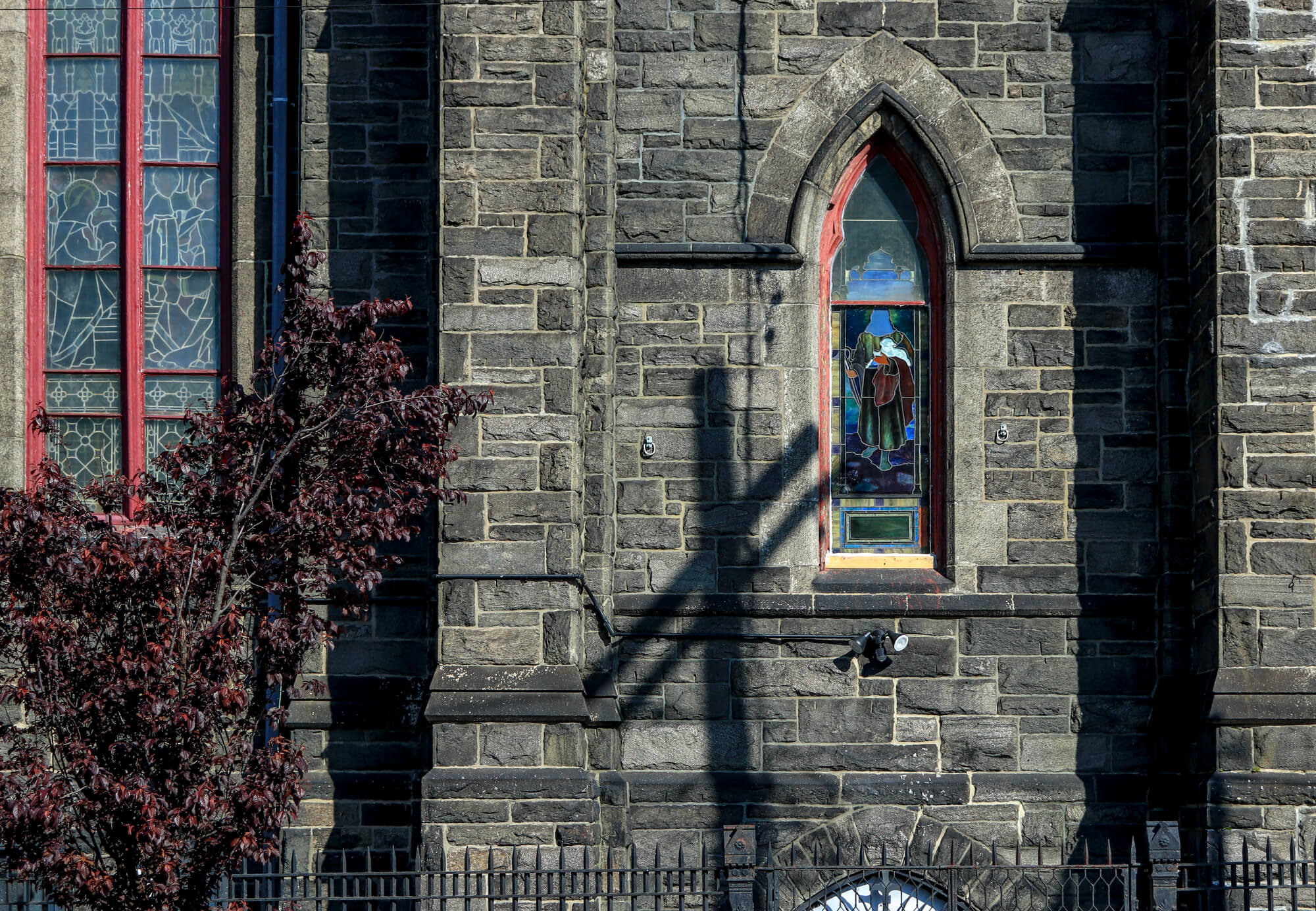
The new Visitation is a rugged, dark gray Romanesque and Gothic Revival stone structure. Its side tower includes four clock faces framed in copper. Tall Gothic stained glass windows rise on the second floor in the front of the church, above the multiple front entrances. A series of arched stained glass windows run the length of the sides of the church.
The architect, be it Houghton or someone else, designed a church perfect for its neighborhood. It is rough hewn and almost factory-like in shape, blending in seamlessly with Red Hook’s warehouses and factory buildings. The clocks in the spire inform the neighborhood of the time, also an important function in a neighborhood ruled by industry, but its cross rises high enough to inform residents of its more spiritual purpose.
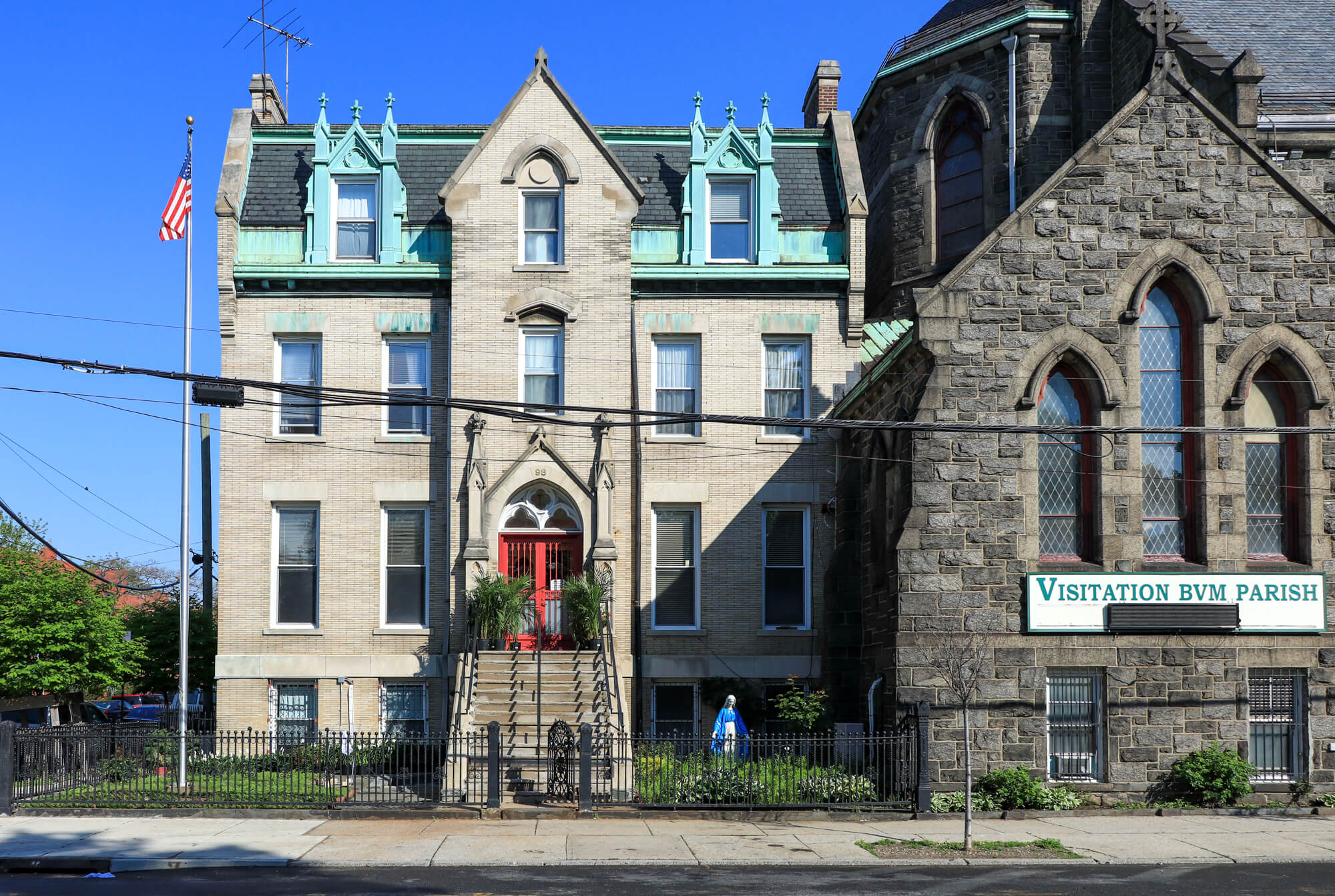
The church was joined by a new rectory behind it, a light-colored Renaissance-styled building, quite different from the church itself. The parishioners pooled their resources to pay for the sanctuary’s stained glass windows, which were imported from Munich. The 16 windows depict various activities and milestones in the life of Mary. Paintings and frescoes above the altar and around the church feature Jesus, various saints and other iconography.
Much has also been written about the wooden trusses supporting the ceiling, likening them to the keel, prow and ribs of a sailing ship. They represent not only a voyage of faith, but the actual voyage of the parish’s congregations — immigrants landing on these shores. The church was rededicated on November 13, 1898.
Visitation Church Moves into the 20th and 21st Century
Immigrants made up this parish in the beginning and continue to do so today. As the 19th century moved into the 20th, the congregation became primarily Irish and Italian, then Italian, then Hispanic, as demographics in Brooklyn continued to change.
The Great Depression took its toll on Red Hook. More than a few of Visitation’s parishioners lived in squalid conditions in the neighborhood’s Hooverville. They were also among the thousands who were able to move into the new Red Hook Houses at the end of the 1930s.
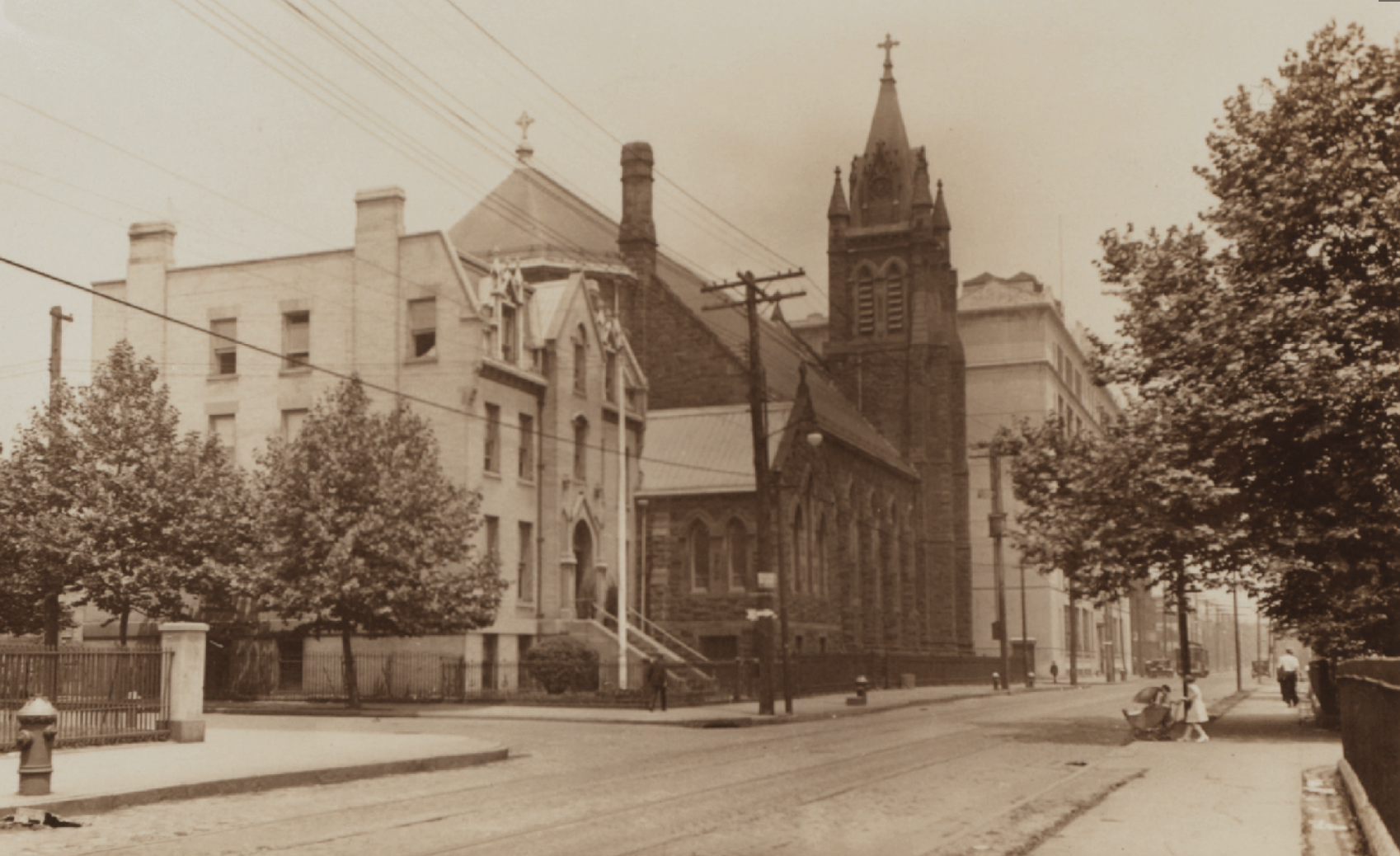
After World War II, Red Hook’s fortunes were not looking good. First, Robert Moses cut Red Hook away from the rest of Brooklyn by running a trench through Carroll Gardens for the Brooklyn-Queens Expressway. In 1949, a nine-year-old started a serious two-alarm fire in the church when he accidentally dropped a lit candle into the Christmas creche.
Meanwhile, around Red Hook, the shipping industry was changing, while manufacturing was leaving Brooklyn. Many of the factories closed forever, leaving empty buildings. The grain terminals were abandoned, and the larger dock companies left Red Hook for ports in Newark and Elizabeth, N.J.
The 19th century wooden warehouses along many of the piers were torn down, and the docks of Red Hook, which were once the busiest in the world, were allowed to rot. Visitation saw its congregation changing too, as Catholics moved for suburban or out of state job and housing opportunities.
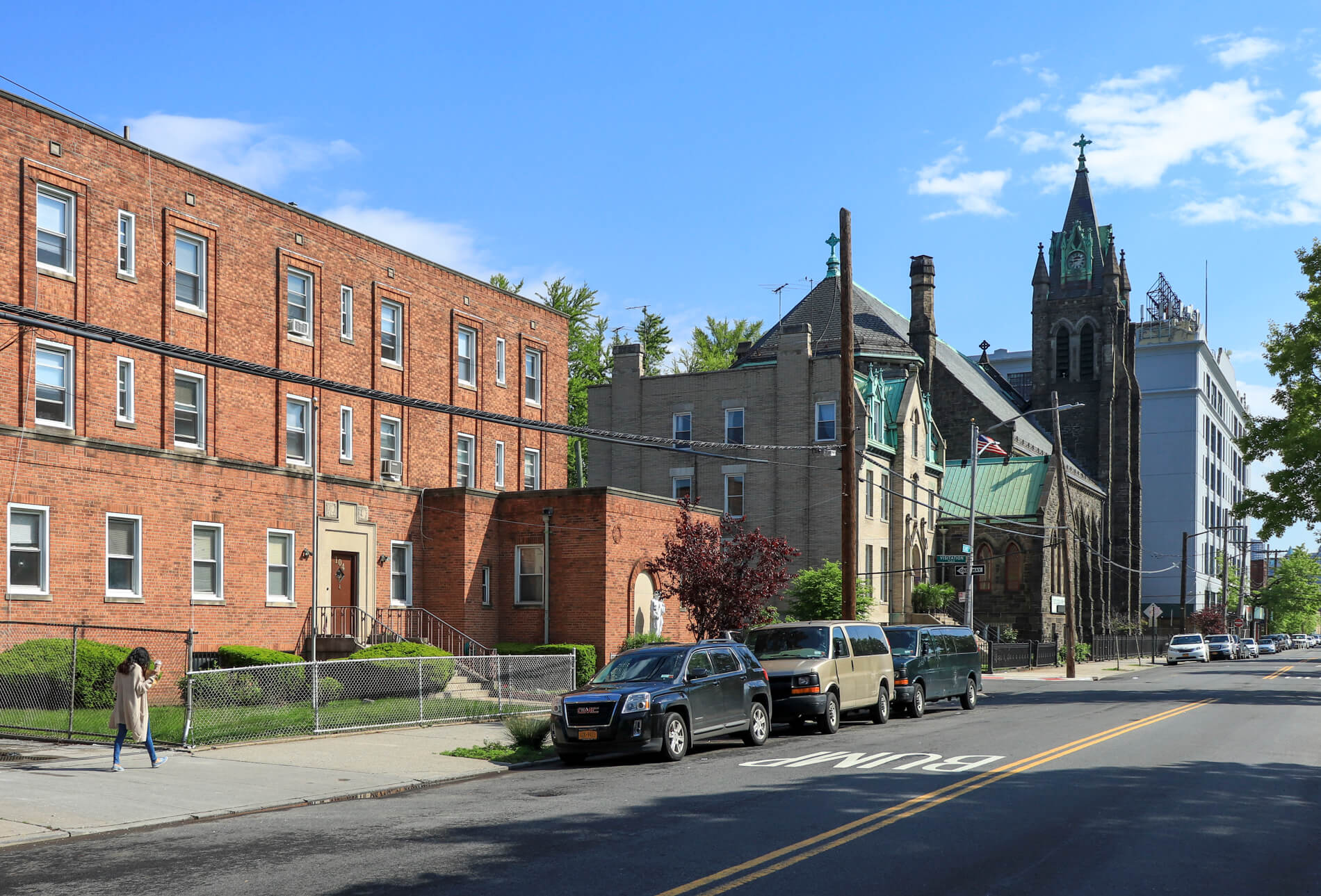
But the parish hung in there, adapting to new cultures and languages. The new people joined old-timers whose families had generations of life in Red Hook, people who never left during the worst of times, and continue to live in a community that is now seeing a surge of wealthier residents.
But very few of them are church goers. By 2010, the church was deeply in debt with a drop in attendance and an aging building that needed a lot of expensive repair. According to most people familiar with the situation, Visitation was the poorest parish in the entire Diocese of Brooklyn and Queens. The Diocese was thinking of closing the parish.
That same year, the church asked Koinonia John the Baptist, a charismatic evangelical Catholic movement originally from Italy, to take over the running and ministry of the church. Under the leadership of the Rev. Claudio Antecini and his Koinonia team, the church has seen its attendance rise. The new priest gave up his salary, held fundraisers, and encouraged parishioner volunteers to do tasks that were once performed by staff.
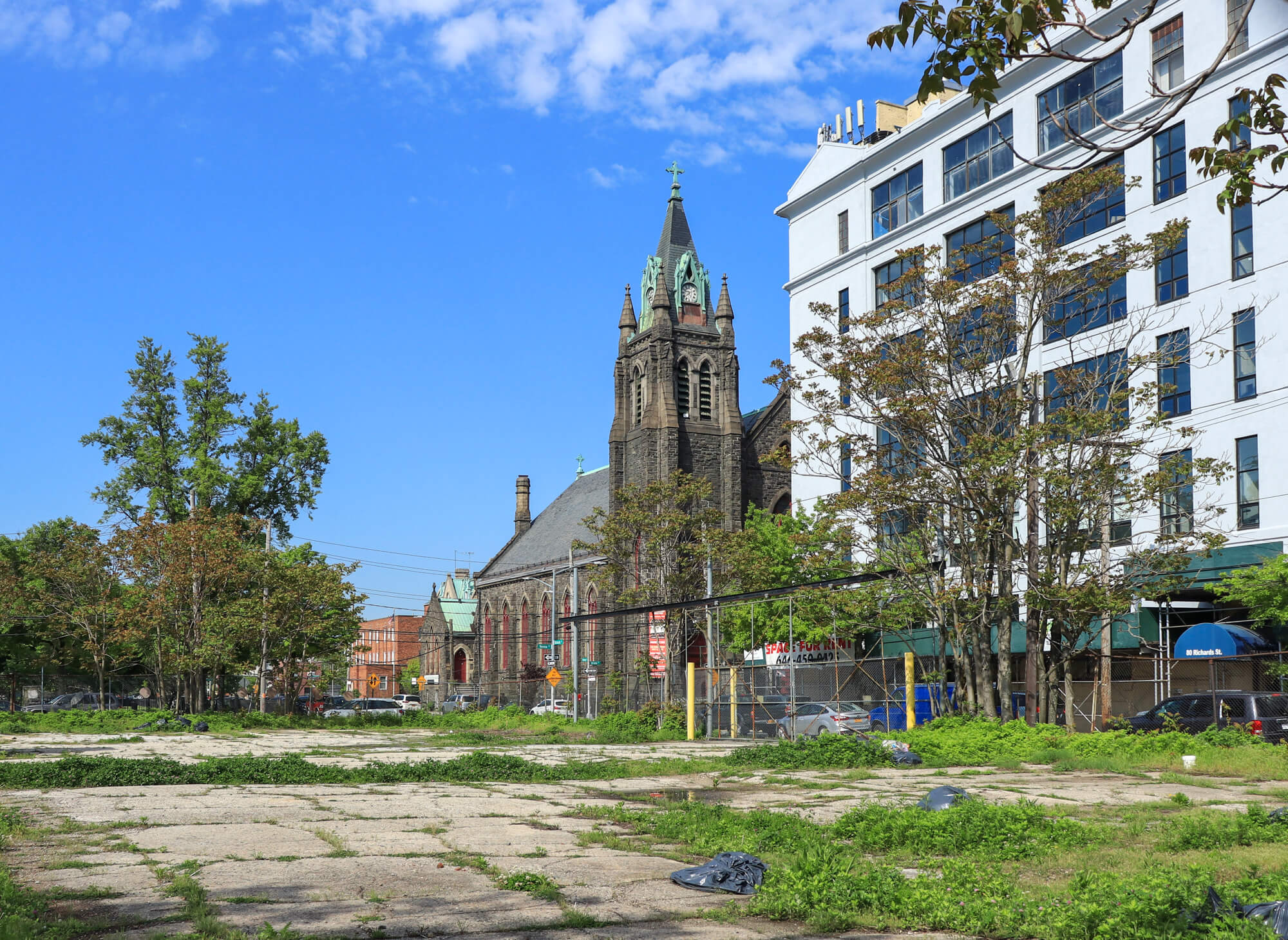
Much has been written about how this is all working out, with mixed reviews on record. But all was put aside in 2012 when Hurricane Sandy put much of Red Hook under water. The church became a community hub for meetings. They served food, handed out information and emergency relief materials and were an important nexus in the community.
The church suffered flood damage in the basement, like just about everyone else. FEMA denied them funding, and the church did not have very much insurance. They relied on volunteers, including Rev. Antecini’s brother, who came from Italy to lay a new cement floor in the basement, the materials donated by local businesses and individuals.
This spirit of giving by both the members of the parish and the people of good will in Red Hook and beyond keep the Visitation of the Blessed Virgin Mary Parish a treasure worth more than the money in the church’s bank account or the land the church complex sits on. It is a testament to the hard work and courage of those who came to a new land, their descendants, and all those who have followed them since.
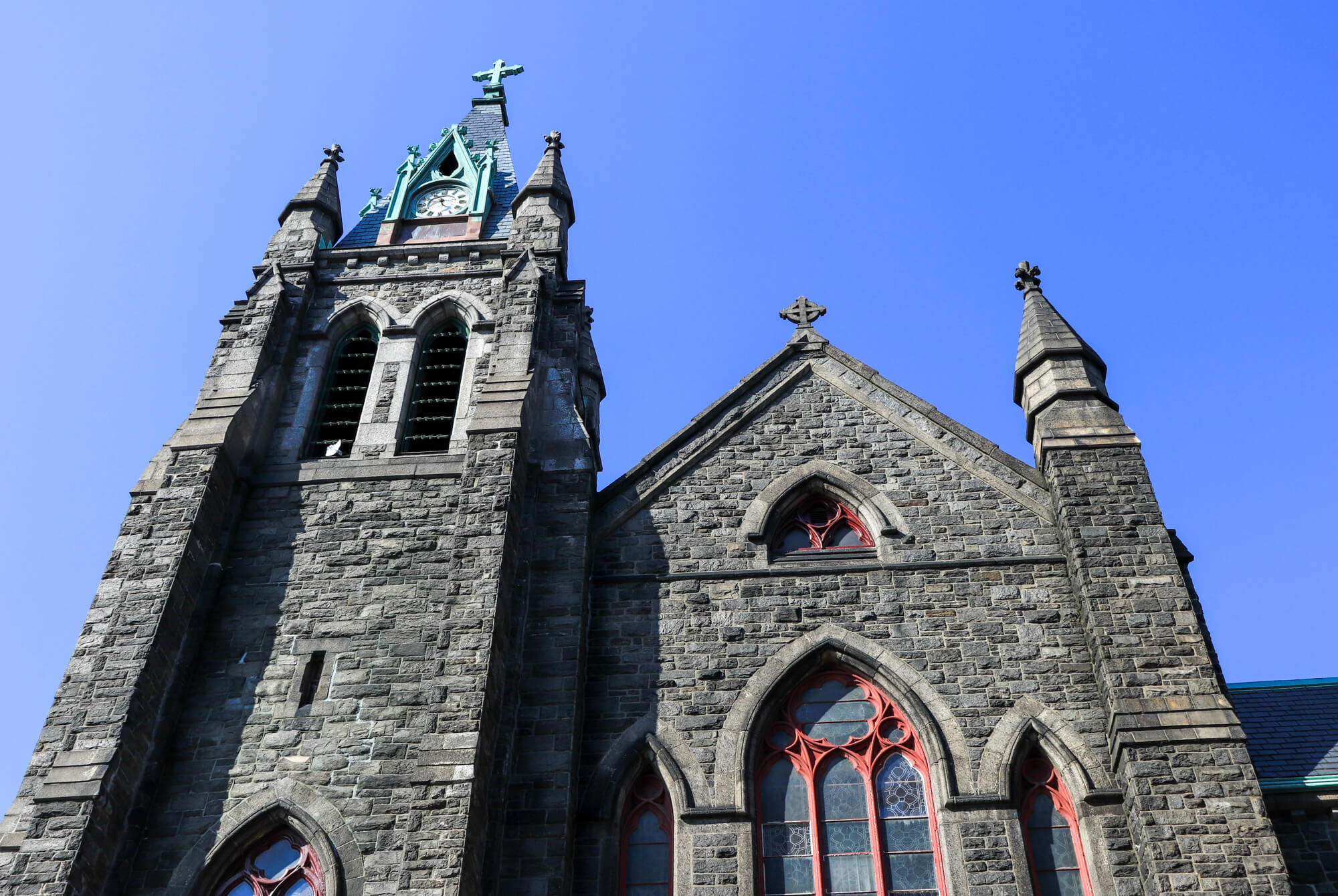


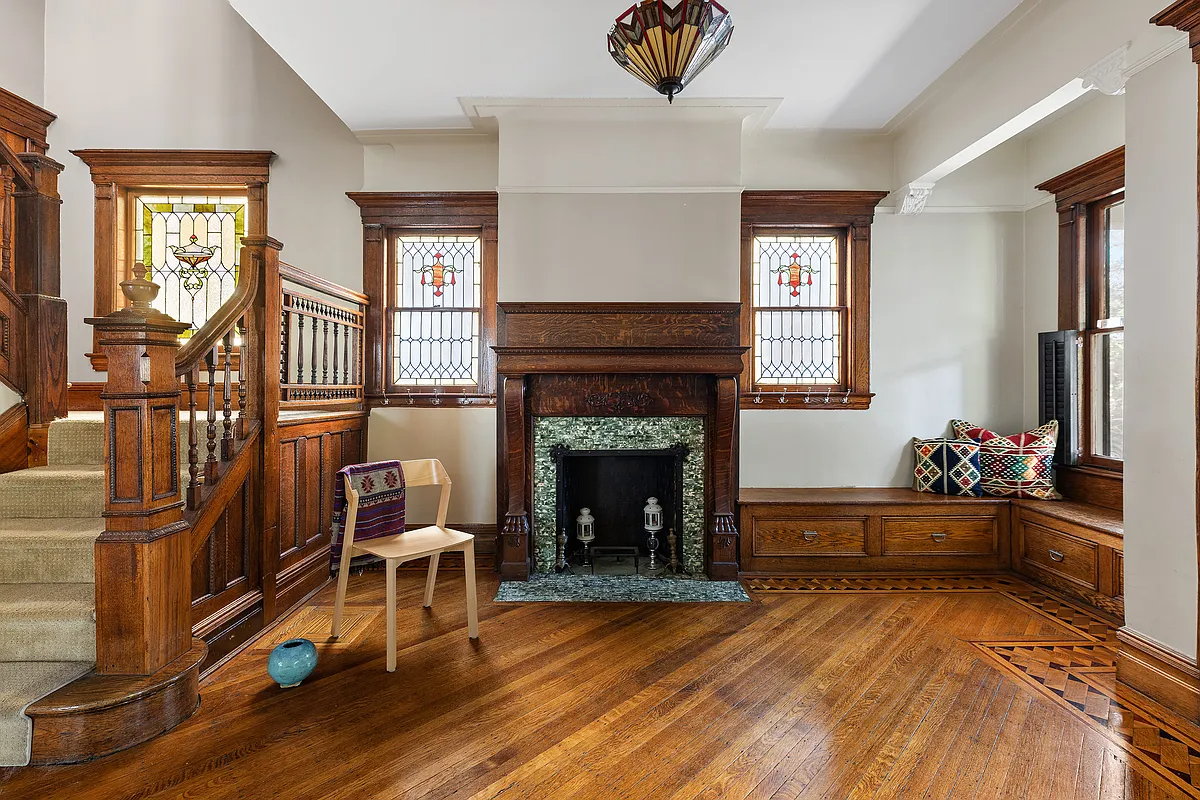
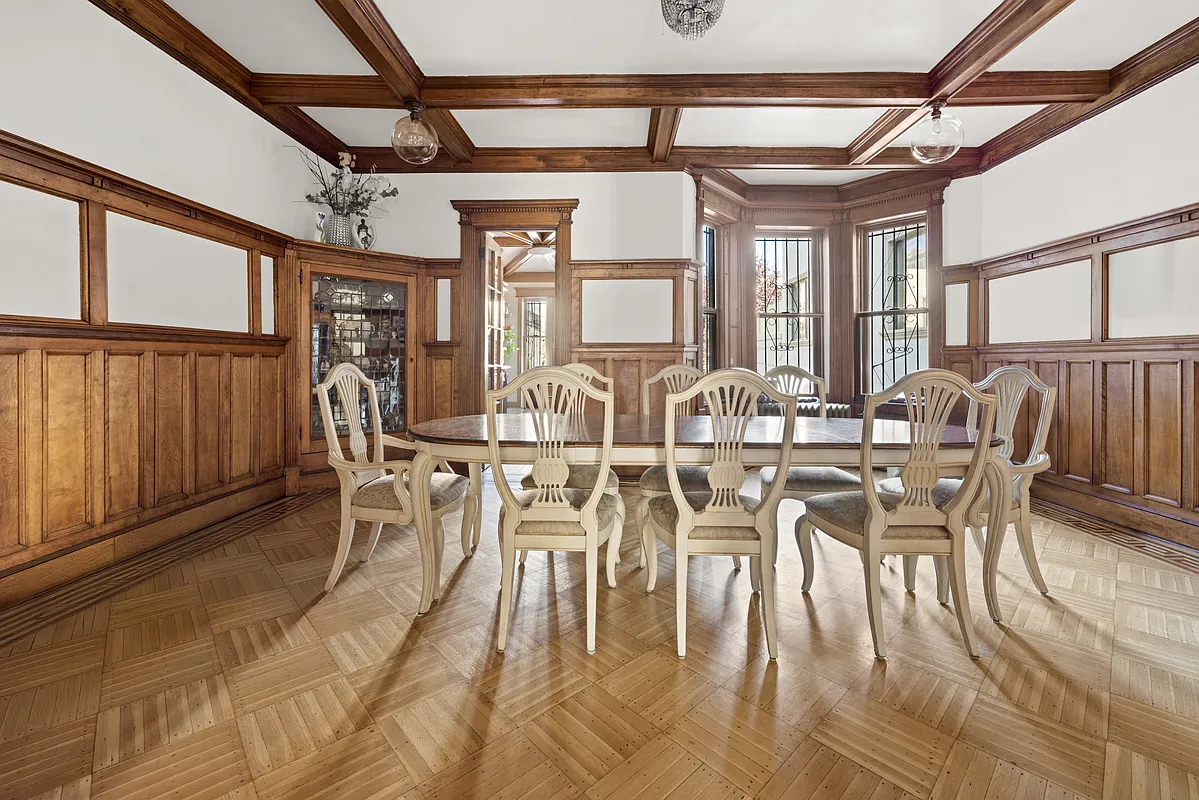
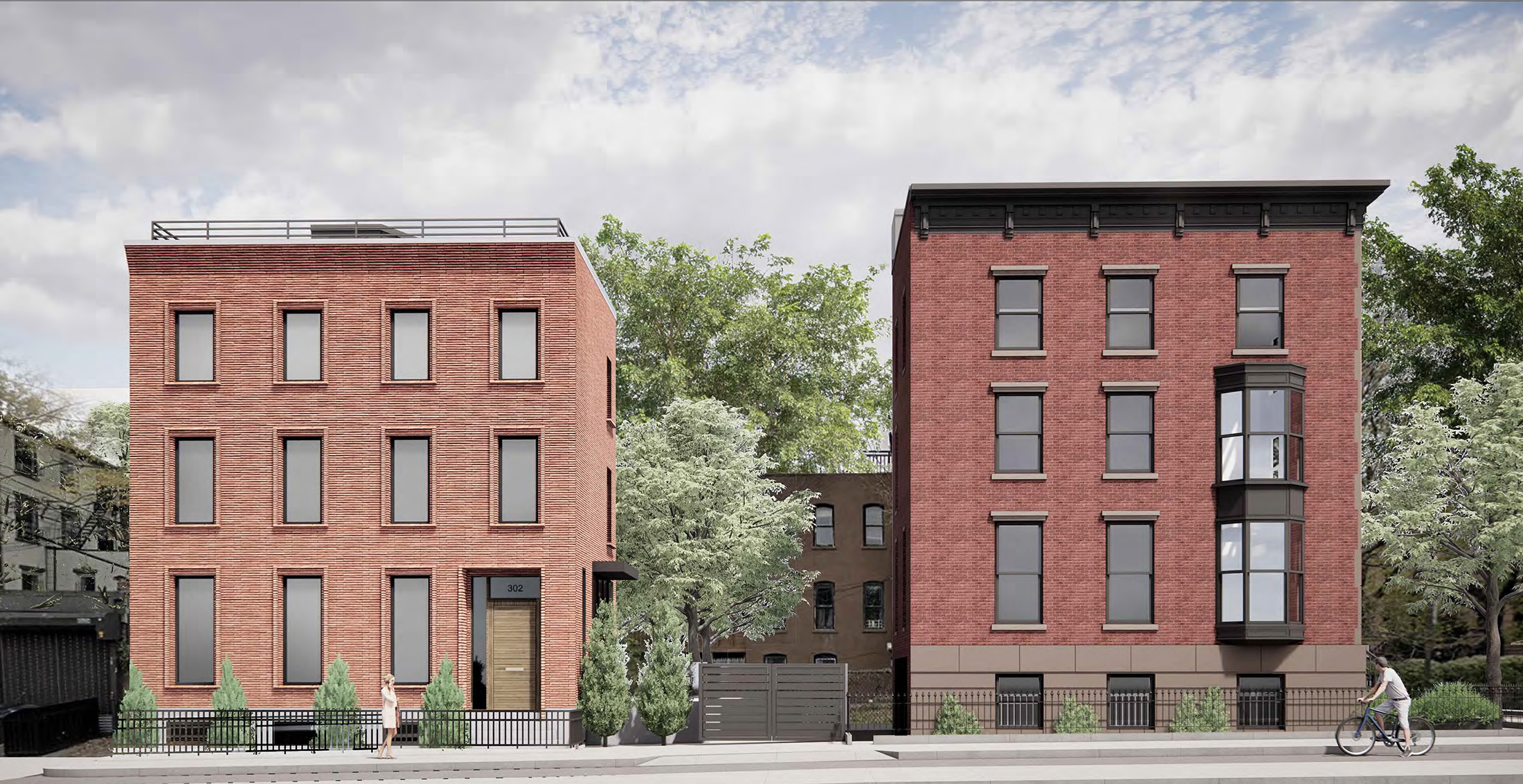
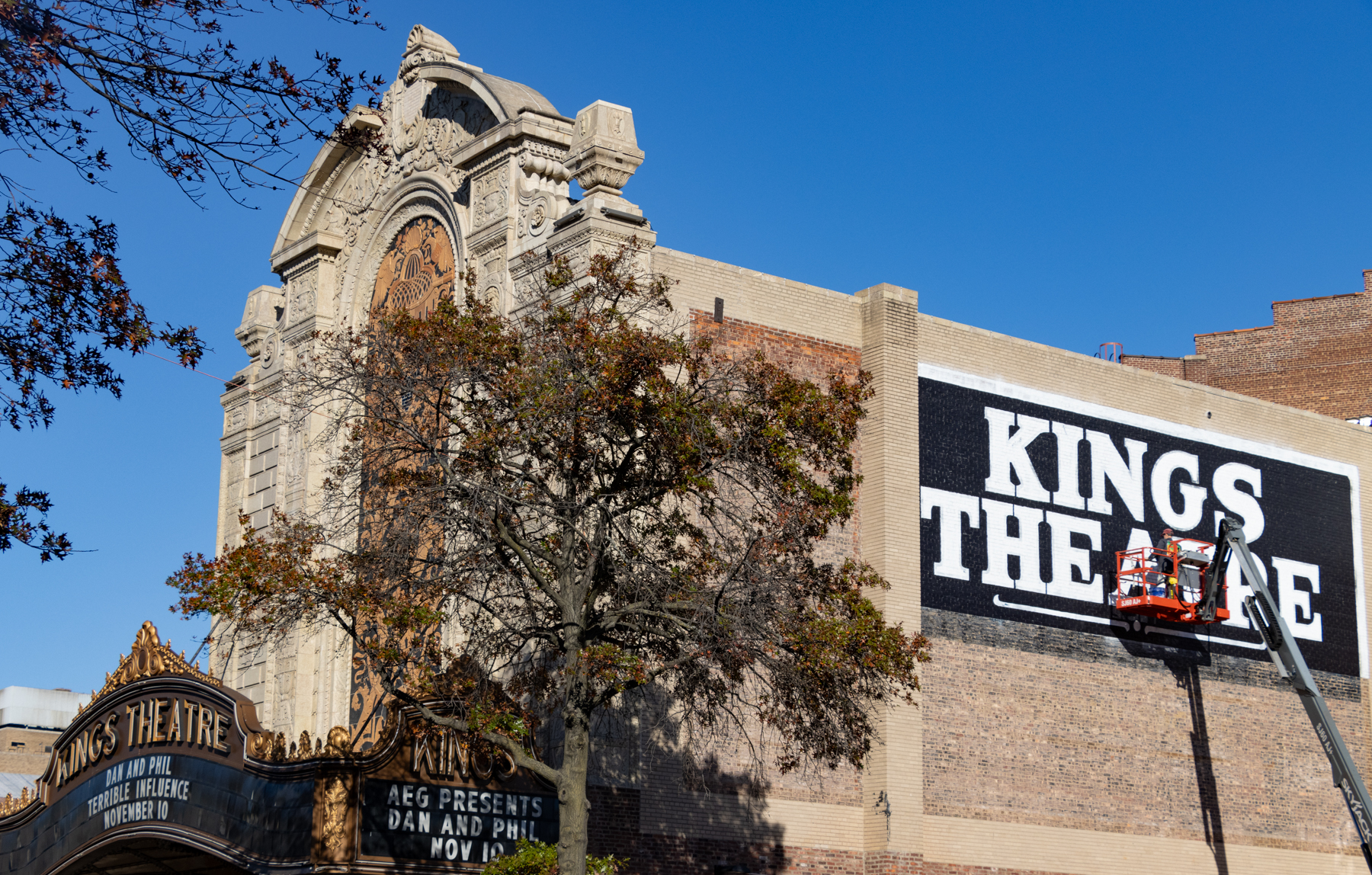




What's Your Take? Leave a Comment